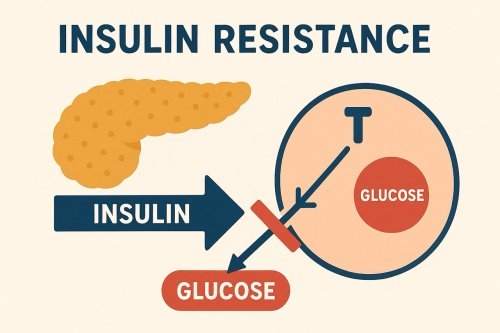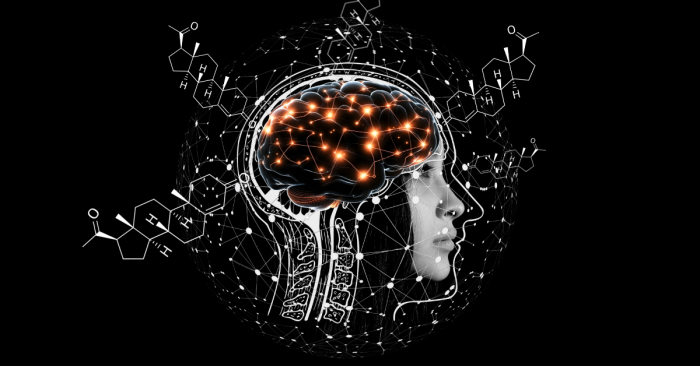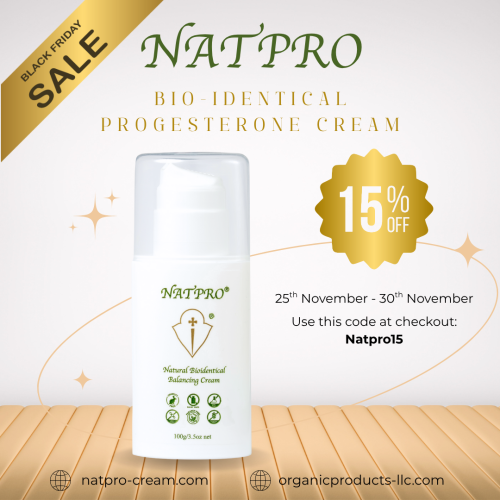Migraine treatment
Migraines are a neurological disorder and migraine treatment focuses primarily on their manifestations as headaches which range from moderate to very severe. The actual cause is unknown, although there are many theories. There does appear to be an hormonal element to their cause in many women.
They affect women three time more frequently than men. But are found in equal proportion in pubertal boys and girls.
A typical migraine usually occurs in one half of the head, referred to as unilateral. But it can become bilateral, or change from side to side. It can last from 1 to 72 hours. In children they are more likely bilateral.
The most common time a migraine occurs is 6 am. The pain often waking the individual. Blood glucose drops overnight, and a drop in this can cause headaches and panic attacks.
The average for an attack is one to three migraines per month. But it can vary from a few in a lifetime to several each week. Many also suffer from daily headaches.
Some of the symptoms experienced during the pain phase are...
- blocked and/or runny nose
- blurred vision
- confusion
- constipation
- dehydration or oedema
- depression and/or severe anxiety
- diarrhoea
- dizziness
- hot flushes and chills
- nausea
- neck pain
- osmophobia
- pallor
- photophobia
- phonophobia
- polyuria
- sweating
- vertigo
- vomiting
Many of the above symptoms echo those found with low progesterone levels.
About a quarter experience an aura immediately preceding it's occurrence. These are transient and can involve speech, sensory and visual disturbances indicating the migraine will soon start. Motor weakness can occur in a few sufferers.
Some of the symptoms are...
- visual changes including flashing lights, spots, partial loss of sight, blurred vision
- smelling odours that aren't there
- tingling or numbness
- decreased hearing
- hypersensitive to touch
Some 40-60% of people experience symptoms hours or days before an attack. Known as the prodrome or pre-headache.
Some of the symptoms are...
- constipation or diarrhoea
- depression
- fatigue
- food cravings
- increased urination
- irritability
- mood swings
- sleepiness
- yawning
The phase after the migraine is called the postdrome. Accompanied by low mood, depression, fatigue, difficulty concentrating or focussing. Although some have feelings of well being or euphoria. It usually takes hours to recover, sometimes days.
There are a few disorders found combined with migraine that are more frequent than that found in the general population. I.e. they are in some way connected and are not coincidence, they are...
- anxiety
- depression
- epilepsy
- hypertension
- irritable bowel syndrome
- stroke
Migraine sufferers are two to five times more likely to experience anxiety and depression than those without. Approximately 25% of people with migraine have depression and 50-60% have anxiety.
Symptoms associated with anxiety are panic attacks, generalised anxiety disorder, and phobias.
Progesterone, and it's metabolite allopregnanolone, are potent anxiolytics.
There is an association between migraines and insomnia, affecting both frequency and intensity. Associations too with fibromyalgia and chronic fatigue syndrome.
Progesterone significantly and positively affects sleep, by it's interaction with the GABA receptor site.
There is an increased risk of stroke if auras are experienced. Although the reason is not known, higher than normal homocysteine seems to be one factor. Homocysteine is a toxic breakdown product of the methylation system.
Women taking oral contraceptives are at particular risk for stroke.
A study on migraine treatment found...
"...women treated for migraines during pregnancy were nineteen times more likely to suffer a stroke, five times more likely to have a heart attack and more than twice as likely to have heart disease, blood clots and other vascular problems"
As a migraine treatment progesterone reduces the risk of clots by 10-15%, it also has anti-atherogenic properties. It is a vasoactive hormone, inhibiting agonist-induced vasoconstriction and reducing blood pressure. It reduces cholesterol levels.
Progesterone significantly reduces infarct area, lipid peroxidation levels and activity of myeloperoxidase in myocardial ischemia/reperfusion injury. It significantly inhibits serum creatine kinase activity and incidences of ventricular tachycardia. Superoxide dismutase activity and reduced glutathione levels are significantly elevated.
Progesterone reduces seizure episodes. Epilepsy is also a neurological brain disorder, causing transient episodes of disturbed neuronal activity in the brain. As with migraine it occurs in women more frequently at ovulation and the few days prior to bleeding.
Symptoms of IBS, including Crohn's Disease and ulcerative colitis, increase in intensity the few days prior to bleeding. Substance P levels are increased too, whereas progesterone has dropped. Progesterone prevents the release of pro-inflammatory cytokines in the gut following trauma, including TBI.
Motor weakness can occur in some migraine sufferers, both progesterone and vitamin D prevent myopathy.
There are certain triggers which can cause a migraine...
- stress
- hunger
- tiredness
- oestrogen
Although alcohol, chocolate and cheese, plus other foods, have been blamed, studies cannot find a correlation between these and migraine attacks.
Tyramine (found in cheese) is often considered a cause, but it cannot pass the blood brain barrier. Many studies have been carried out on a possible relationship, with negative results.
Certain foods and alcohol do contain histamine. Plus they can cause histamine to be released from mast cells. Histamine causes an inflammatory reaction. Infusing histamine into a vein can provoke a migraine attack.
Oestradiol increases mast cell histamine secretion, which is initiated by substance P. Substance P is a pro-inflammatory, nociceptive neuropeptide. Progesterone and it's metabolites are suppressed by substance P, unless sufficient is used.
Progesterone inhibits mast cell secretion.
Oestrogen is an excitatory, inflammatory hormone, it's involvement is hardly surprising. Particularly when looking at the statistics, far more women get migraines than men.
Substance P is not only a pro-inflammatory neuropeptide, but it causes nausea and vomiting too. The vomiting centre in the brain contains high concentrations of substance P. It coexists with the excitatory neurotransmitter glutamate.
Progesterone is an effective anti-emetic for nausea in pregnancy. If used as a preventative small amounts are needed. But once nausea has started large amounts are required.
Substance P increases glutamate activity, and is implicated in the development of brain oedema after Traumatic Brain Injury.
Receptors for substance P are found not only in the gut and brain, but the skin too. This could possibly be the reason why some people with migraines experience allodynia. A pain that results from a stimulus that is not normally painful.
Progesterone protects against peripheral neuropathy, which could possible explain the allodynia and relieve it.
Serotonin, acetylcholine, histamine, and substance P are the neurotransmitters involved in stimulating nausea. The vomiting centre contains high levels of these.
Vasodilation has been one explanation for migraines, but it can't explain some. Serotonin release is another theory, as certain recreational drugs can cause serotonin release precipitating a migraine.
An overstimulated brain is another theory. Excess glutamate, an excitatory neurotransmitter, causes neurons to fire too frequently. Blocking the production of this could decrease brain activity and reduce migraines.
Progesterone, and it's metabolite allopregnanolone, have been found to enhance GABA's calming affect and suppress the excitatory glutamate response. The anti anxiety affect is noticed within three to ten minutes, whether injections or topical progesterone had been used as the means of administration.
In many women the influence of hormones is very strong. Migraines can be experienced from menarche, through the intervening years, up to and including peri-menopause and menopause. The most likely times they occur are the few days before bleeding and at ovulation. Oral Contraceptives can cause them too. Whereas pregnancy relieves many women from attacks.
Progesterone and it's metabolite, allopregnanolone, are potent analgesics, anxiolytics and anti-inflammatories.
One study on migraine treatment says...
"Biochemical and genetic evidence suggest central and peripheral roles for estrogen in the pathophysiology of menstrual migraine, with potential interactions with excitatory circuits, including serotonergic components... Epidemiological, pathophysiological, and clinical evidence link estrogen to migraine headaches."
The evidence for oestrogen's role is all too obvious. Not only is it an excitatory, inflammatory hormone, but it stimulates histamine secretions from mast cells. It works with substance P causing nausea and stimulates glutamate, an excitatory neurotransmitter.
Excess glutamate accumulation outside a cell, causes calcium ions to enter the cell. This causes neuronal damage, ie inflammation, followed by cell death.
Oestrogen also stimulates prolactin secretion from the pituitary. Prolactin, although the hormone of lactogenesis, is also an inflammatory hormone, and is implicated in migraines.
High levels of progesterone prevent the release of prolactin. A drop in progesterone levels allows prolactin to rise. This occurs during childbirth with dropping progesterone levels, which signals the release of prolactin and lactogenesis.
High prolactin levels suppress dopamine, stress drops dopamine too. With a drop in dopamine depression is very likely to occur. The amino acid tyrosine is the precursor to dopamine, levels of tyrosine drop when stressed.
Migraines associated with the menstrual cycle are more prevalent at ovulation and the few days prior to bleeding. They can also occur during the entire luteal phase.
Oestrogen (oestradiol) begins rising approximately 5 days before ovulation commences. Rising exponentially about 50 hours prior to ovulation.
Progesterone also surges 50 hours before ovulation. This surge has nothing to do with ovulation, but is secreted by the brain.
If this pre-ovulatory surge of progesterone does not occur, oestrogen will become the dominant hormone and migraines, seizures, asthma attacks, panic attacks, heart palpitations and more can occur.
Oestrogen peaks again mid-luteal phase, progesterone should too. But if an anovulatory cycle occurs, or the corpus luteum fails to secrete sufficient progesterone, known as a defective luteal phase, progesterone will not rise. This rise is essential to counter the oestrogen peak. If not, the symptoms listed above can occur throughout the luteal phase.
Finally the few days prior to bleeding, progesterone withdrawal begins. This often leaves oestrogen the dominant hormone and the same symptoms, plus the typical PMS symptoms, occur.
Vitamin D is also a potent anti-inflammatory and analgesic, enhancing the action of progesterone. A lack of vitamin D is implicated in migraines too.
Soldiers, or for that matter anyone suffering from concussion or Traumatic Brain Injury, can experience post-traumatic headache.
After thirty years of trialling various substances, progesterone is the most successful at preventing the oedema and inflammation that occurs in TBI.
If used together with vitamin D the result is greater.
To recap...
It appears a cascade of inflammatory cytokines are released. Not only causing the migraine itself, but all the associated problems. The increased risk for stroke, for the inflammatory gut reaction, nausea, tiredness, heart attacks, heart disease, blood clots, other vascular problems, stroke, myopathy, depression and anxiety.
Progesterone, vitamin D and high levels of antioxidants should be taken as they provide a potentially effective migraine treatment. Stress management techniques should also be employed. If high oestrogen levels are present it's essential to suppress these with progesterone.
Natural migraine treatment
As a preventative, women should use 100-200mg/day. Once a migraine and nausea have started, 400-500mg/day are needed, possibly more. Once symptoms have stabilised the amount should be reduced very slowly, over a number of weeks.
Men should use 10-100mg/day progesterone, more if symptoms have begun. If suffering from previous TBI or concussion, or current PTSD, the amount will need to be higher, but only trial and error will find the optimal level.
For more information see the page on How to use progesterone cream.
Before starting progesterone therapy, please see the page on Oestrogen Dominance.
Vitamin D is an essential nutrient, needed by every cell to function normally. For more info on vitamin D levels, test kits etc see...
GrassrootsHealth
Birmingham Hospital
Blood levels should be 70-100ng/ml or 175-250nmol/L and not the 30ng/ml or 75nmol/L most labs and doctors regard as adequate. The minimum daily dose should be 5000iu's per day, although the latest research indicates it should be 10,000iu's per day, see here.
If prolactin is high consider taking tyrosine, the precursor to dopamine.
The following migraine treatments have been found to help some people...
- EFT
- acupuncture
- chiropractic manipulation
- physiotherapy
- massage
- relaxation
- magnesium
- coenzyme Q(10)
- riboflavin
- vitamin B(12)
- fever-few
- butterbur
Conventional migraine treatments
These include...
- beta-blockers
- flunarizine
- valproic acid
- topiramate
- amitriptyline
- triptans
- ergotamines
- narcotic analgesics
- non-steroidal anti-inflammatory drugs
- corticosteroids
- surgery
A new techinque using transcranial direct current stimulation has been recently tested. It applies a mild electrical current to the brain from electrodes attached to the scalp. It reduced the duration of the attacks and decreased the pain.
Useful migraine treatment websites...
 Feeling tired, foggy, or struggling with stubborn weight gain—especially around the waist? You might be surprised to learn that these symptoms could be linked to insulin resistance, a condition that a…
Feeling tired, foggy, or struggling with stubborn weight gain—especially around the waist? You might be surprised to learn that these symptoms could be linked to insulin resistance, a condition that a… Are you struggling with irregular cycles, unwanted hair growth, or unexplained fatigue? You’re not alone. Polycystic Ovarian Syndrome (PCOS) affects up to 10% of women of reproductive age—and many mor…
Are you struggling with irregular cycles, unwanted hair growth, or unexplained fatigue? You’re not alone. Polycystic Ovarian Syndrome (PCOS) affects up to 10% of women of reproductive age—and many mor… While progesterone is often discussed in relation to reproductive health, emerging research reveals its remarkable role in supporting brain function and protecting against neurological decline. Proges…
While progesterone is often discussed in relation to reproductive health, emerging research reveals its remarkable role in supporting brain function and protecting against neurological decline. Proges… Incase you missed it!
Today is the last day for you to claim 15% off our Natpro 100ml Dispensers. The sale ends at midnight tonight.
How to Claim Your 15% Discount:
•Shop at
Incase you missed it!
Today is the last day for you to claim 15% off our Natpro 100ml Dispensers. The sale ends at midnight tonight.
How to Claim Your 15% Discount:
•Shop at